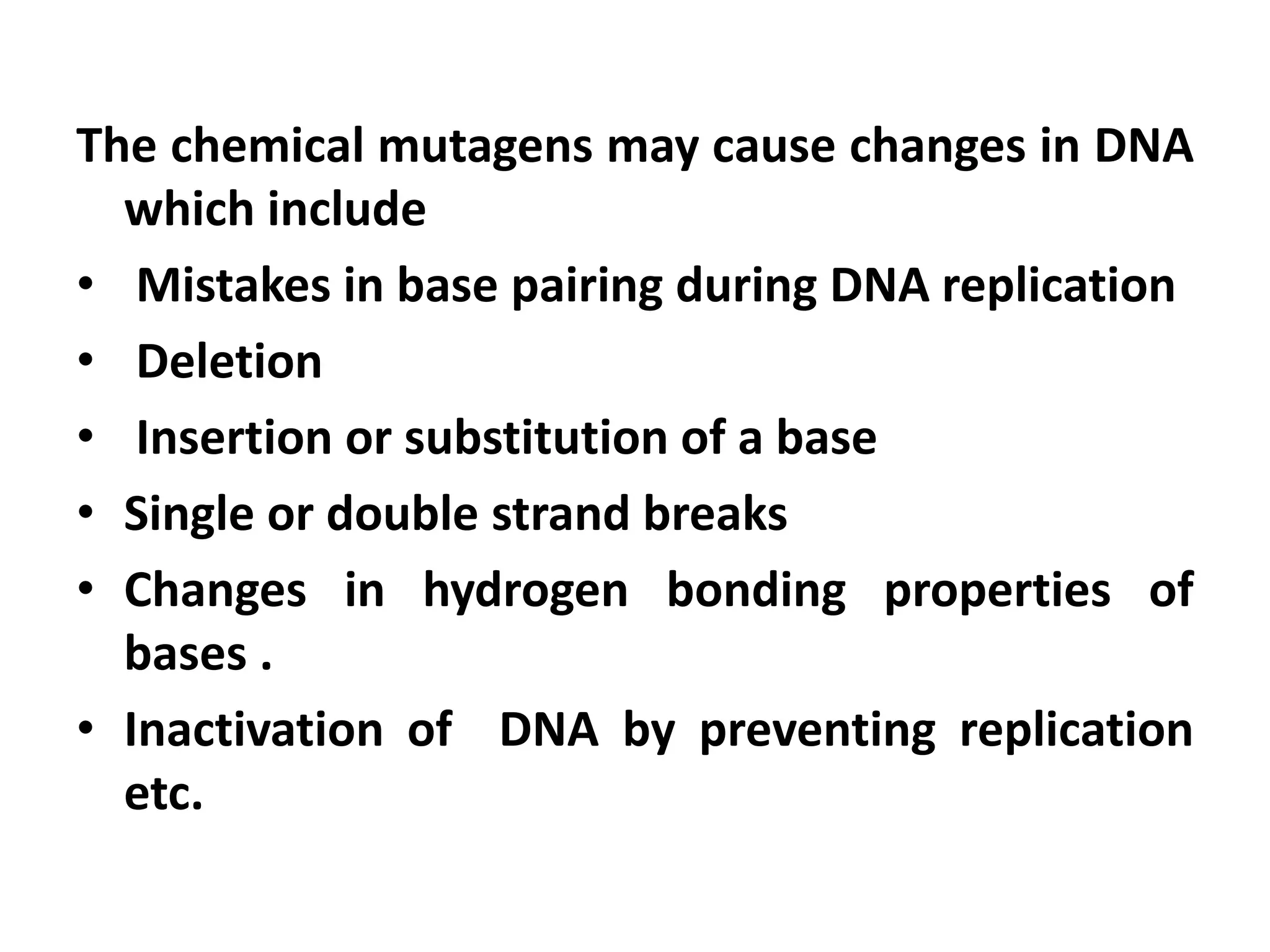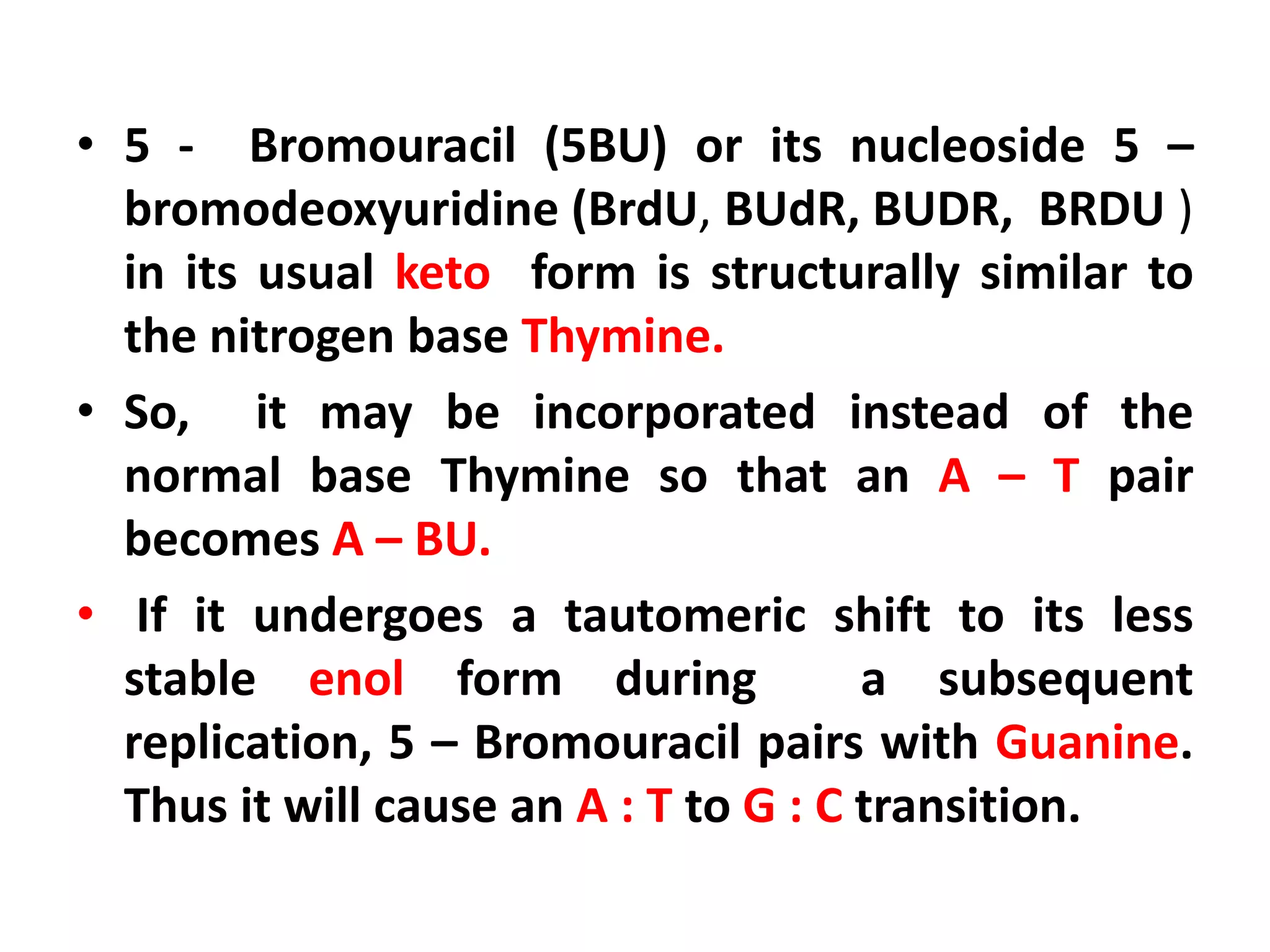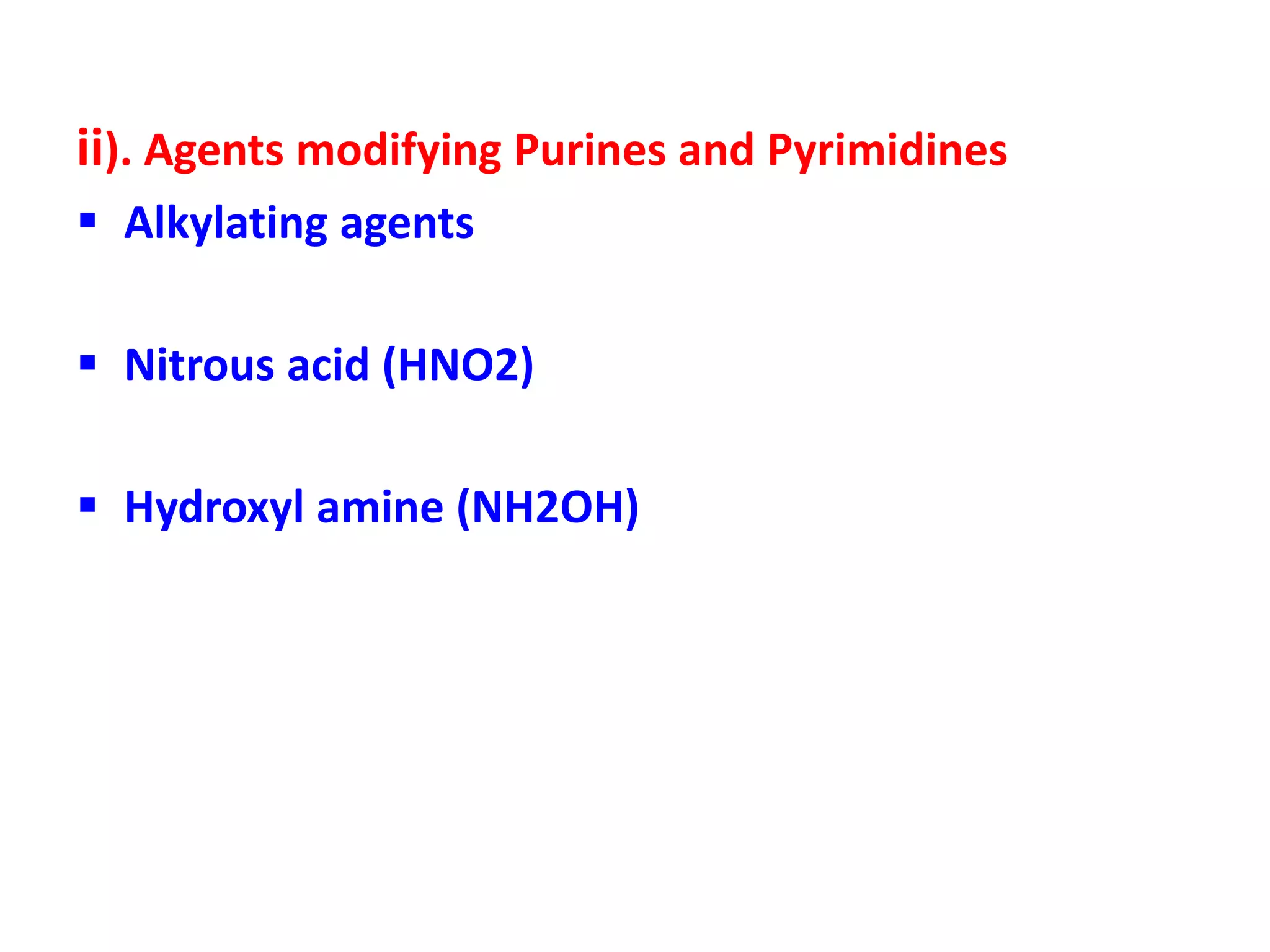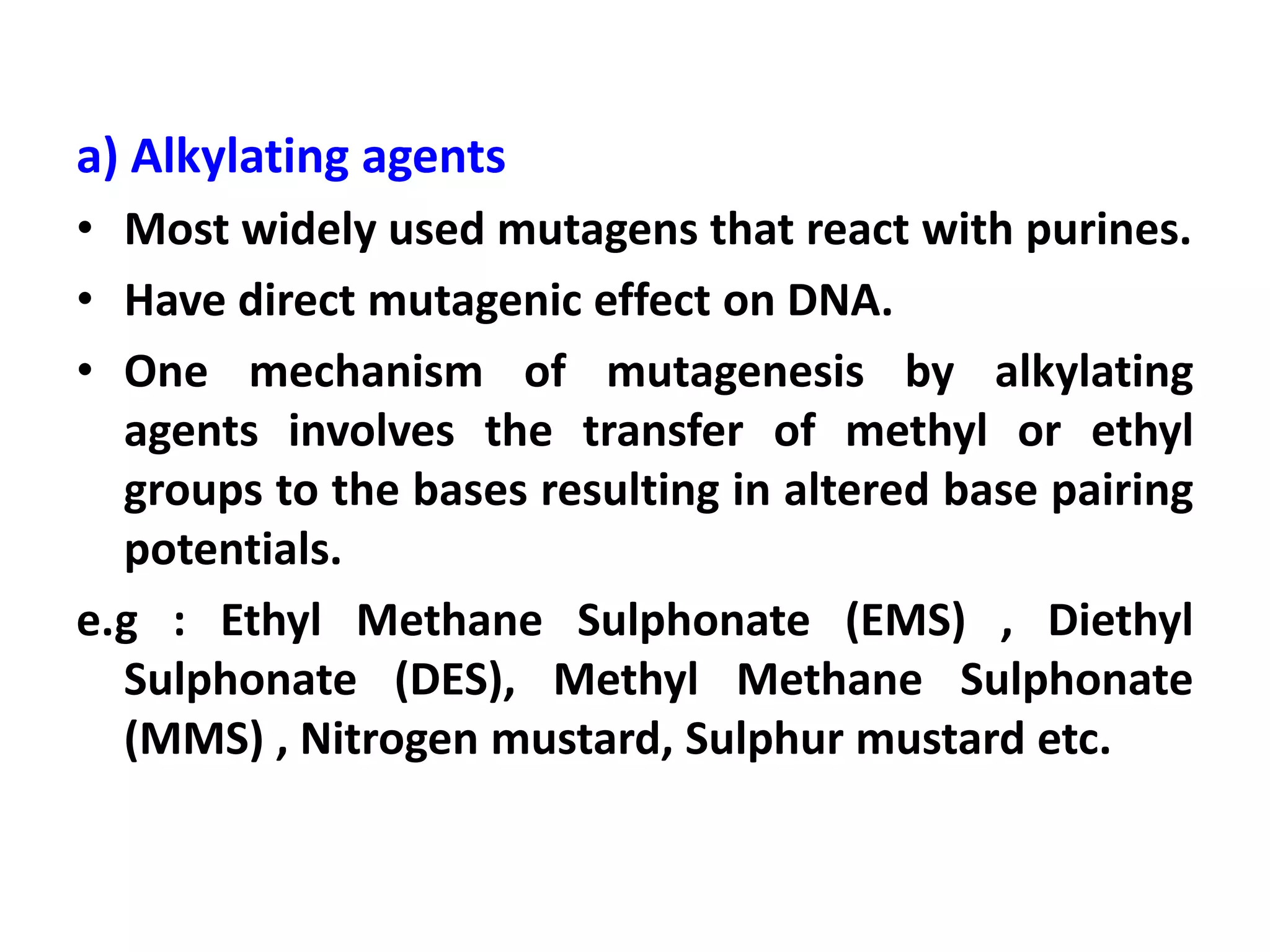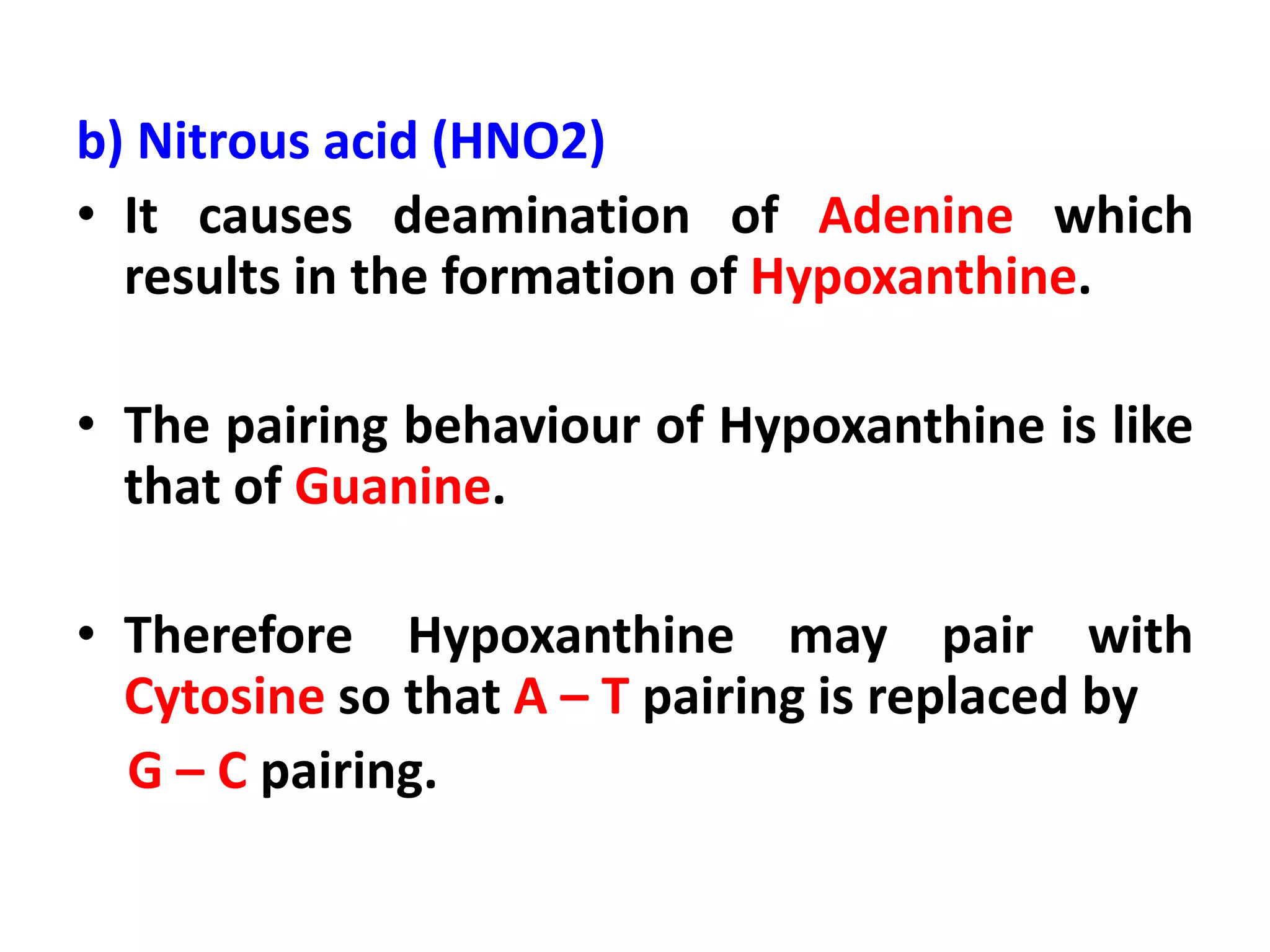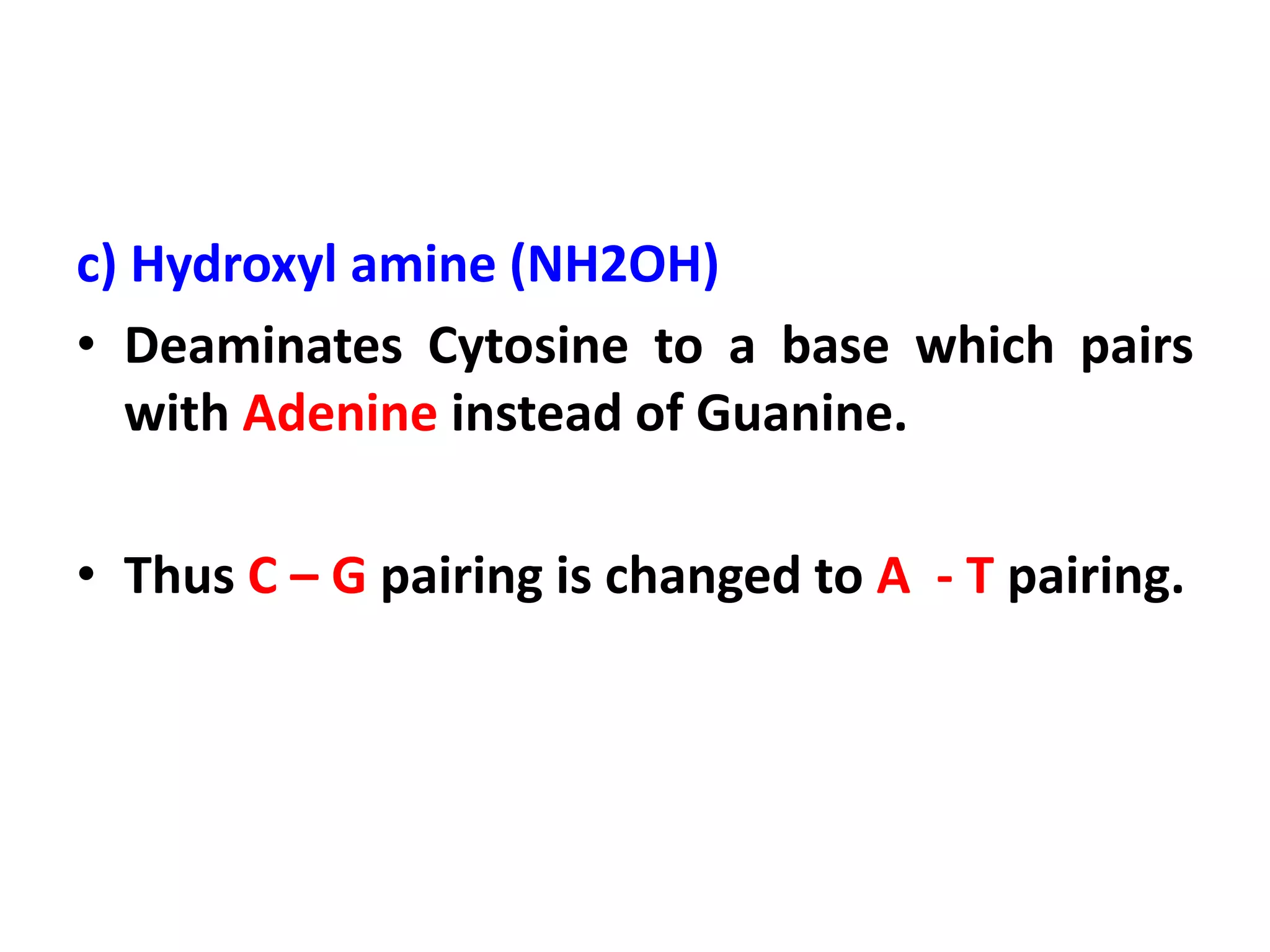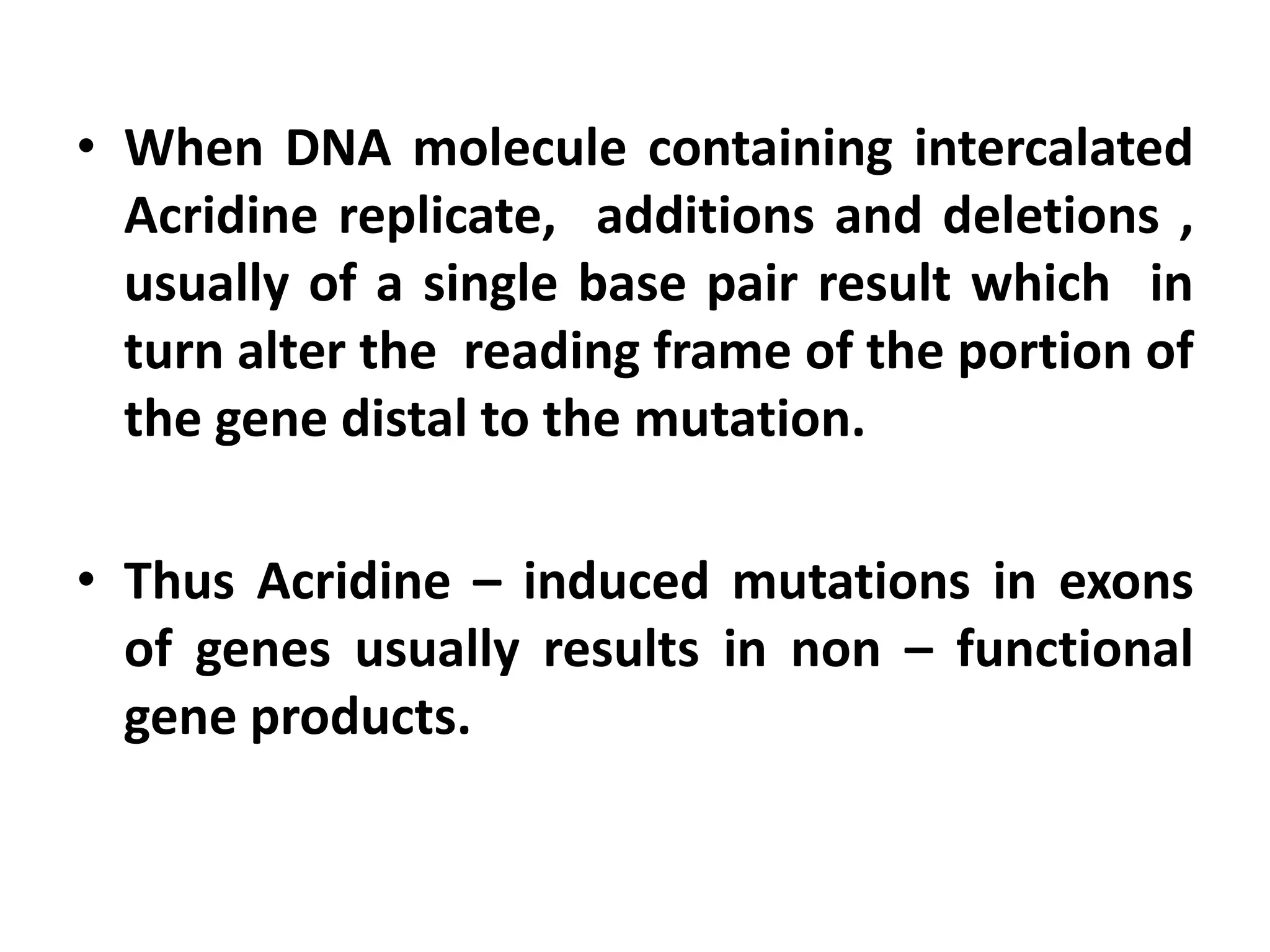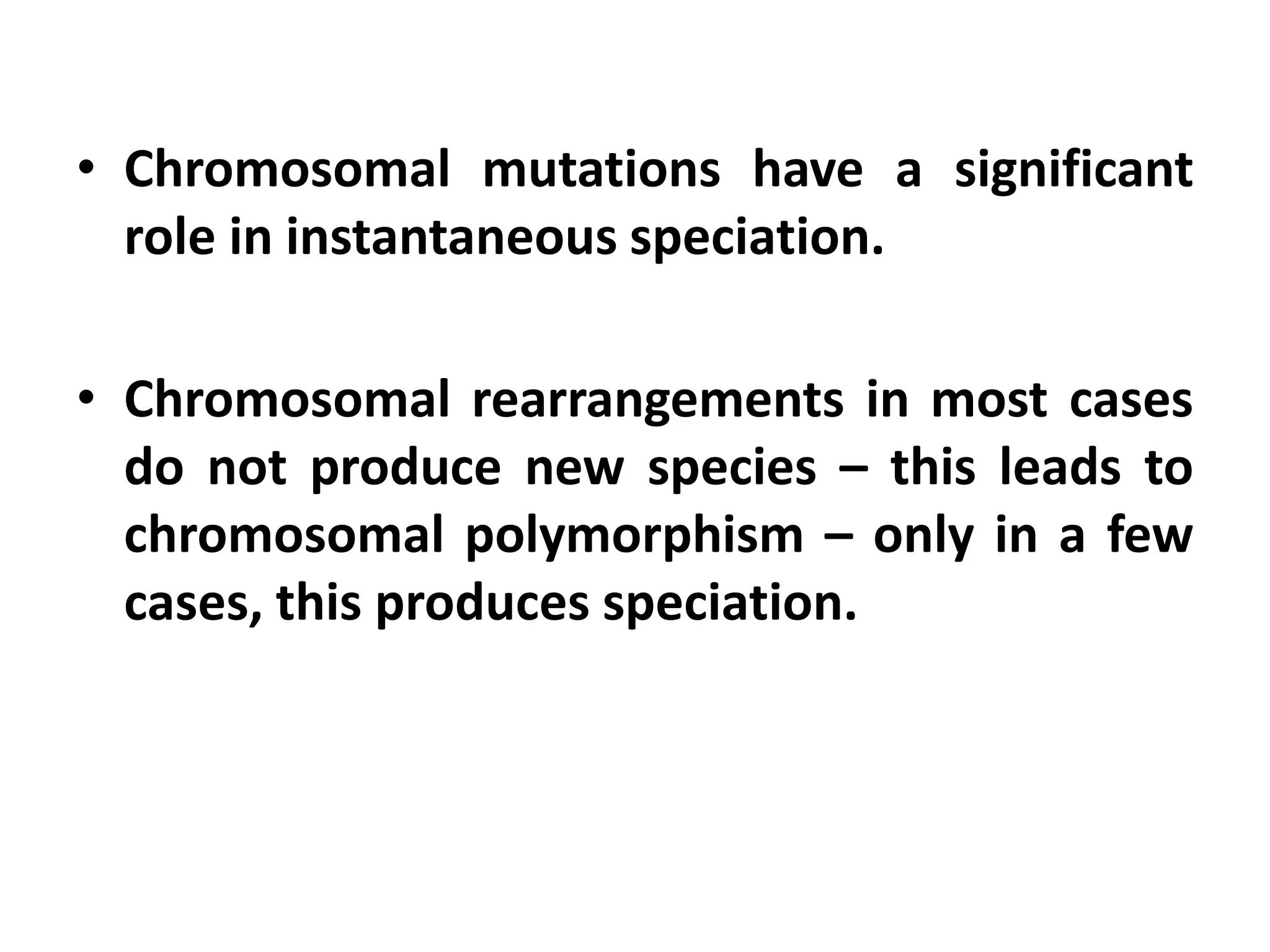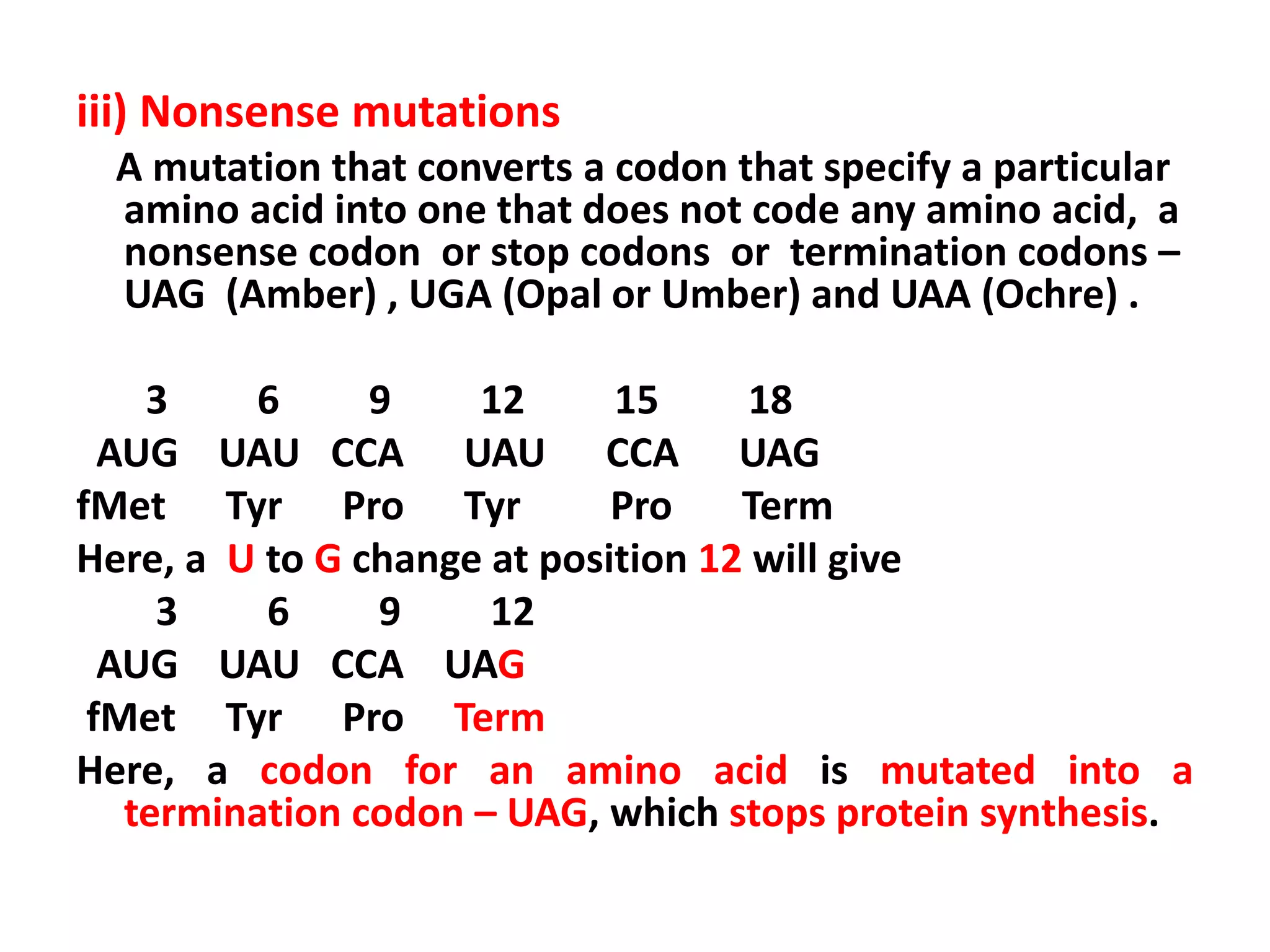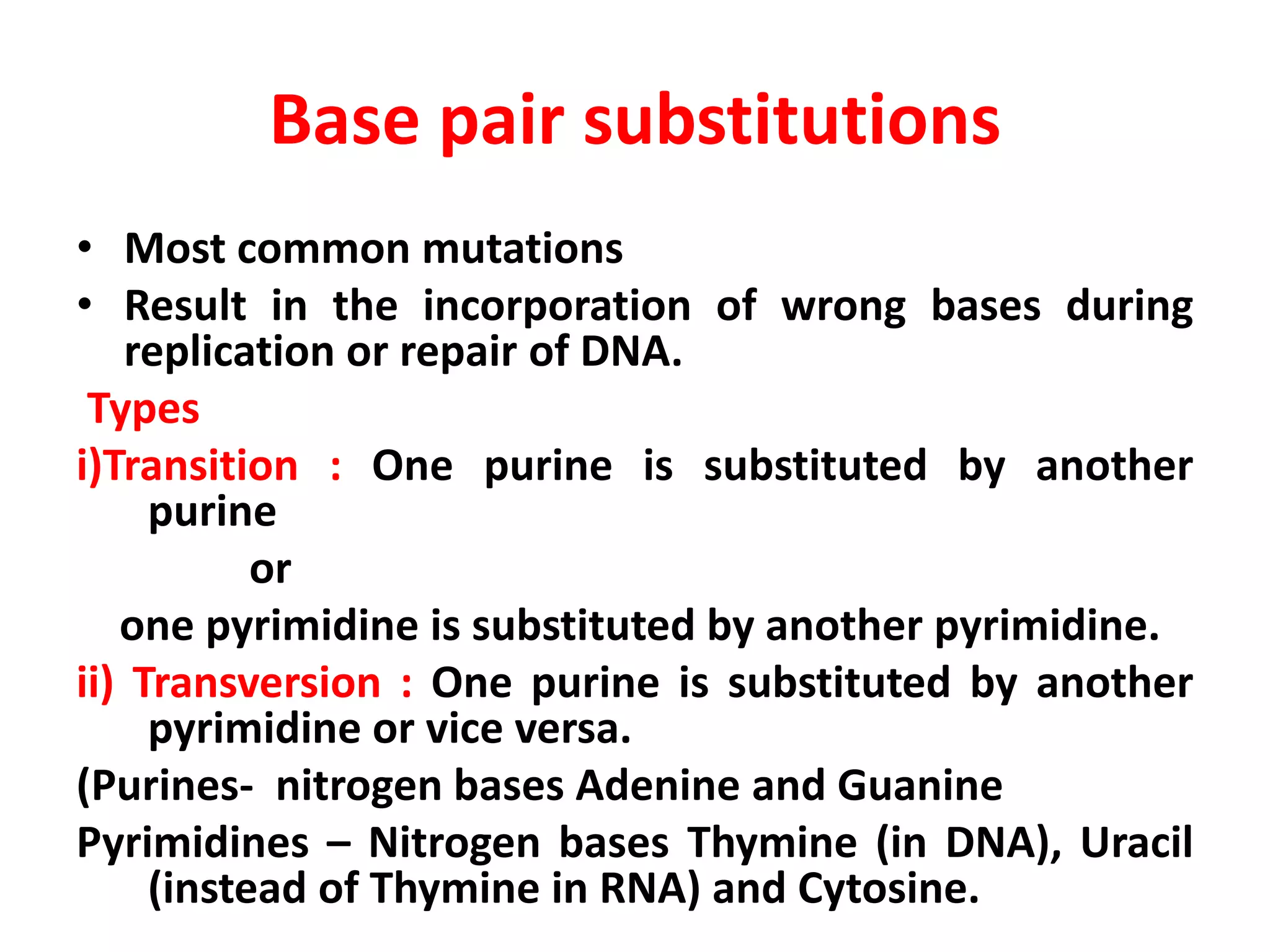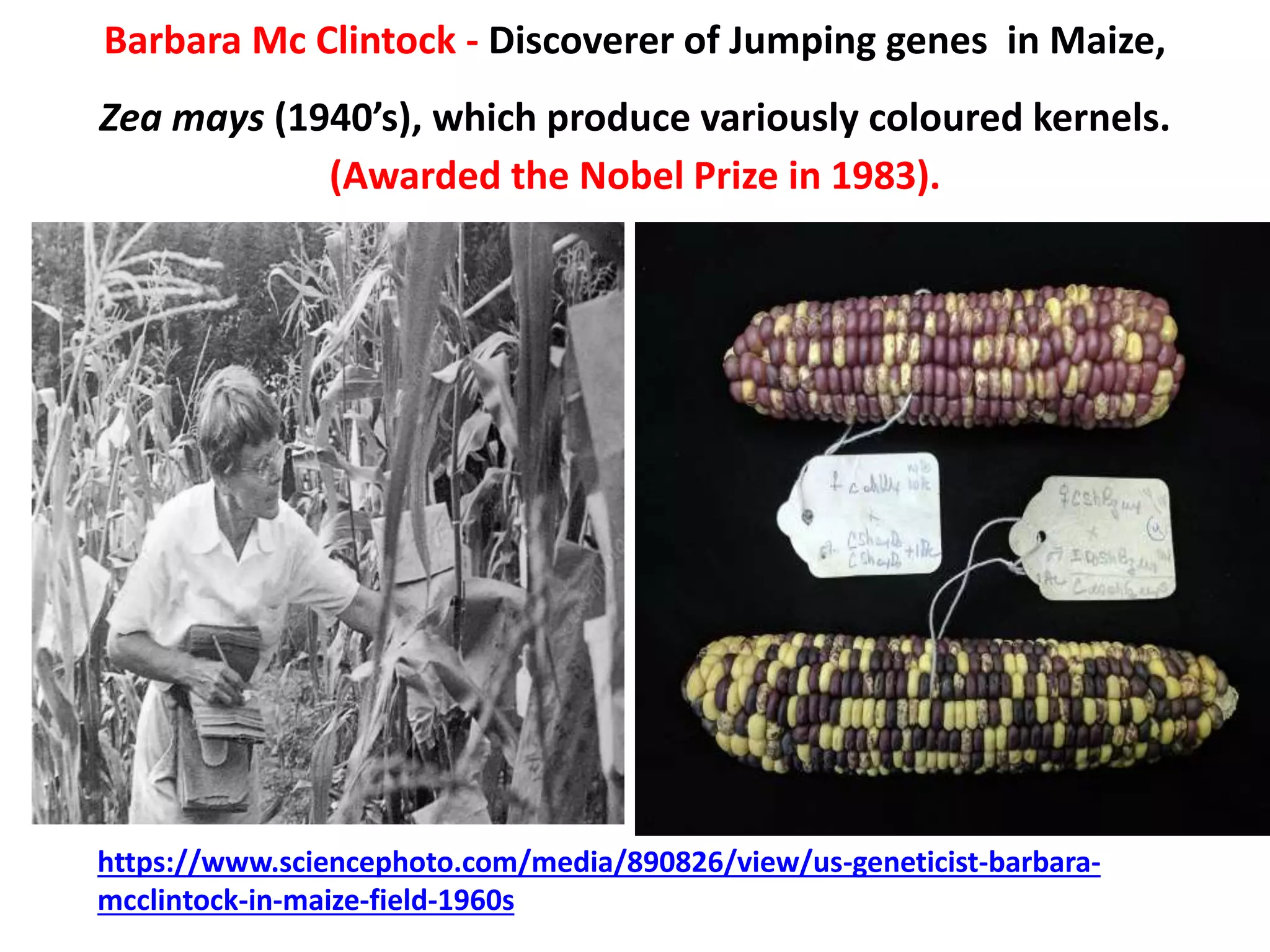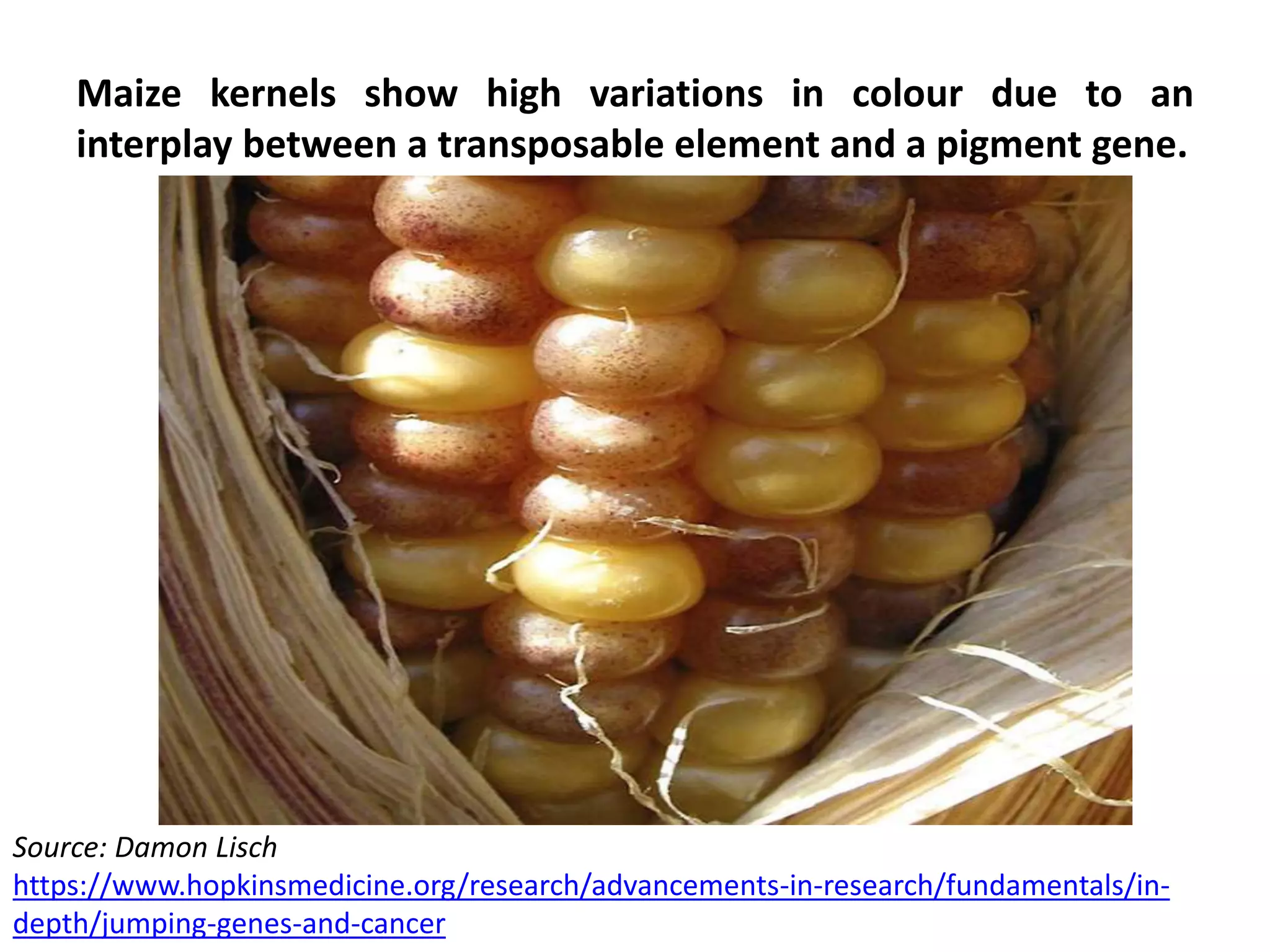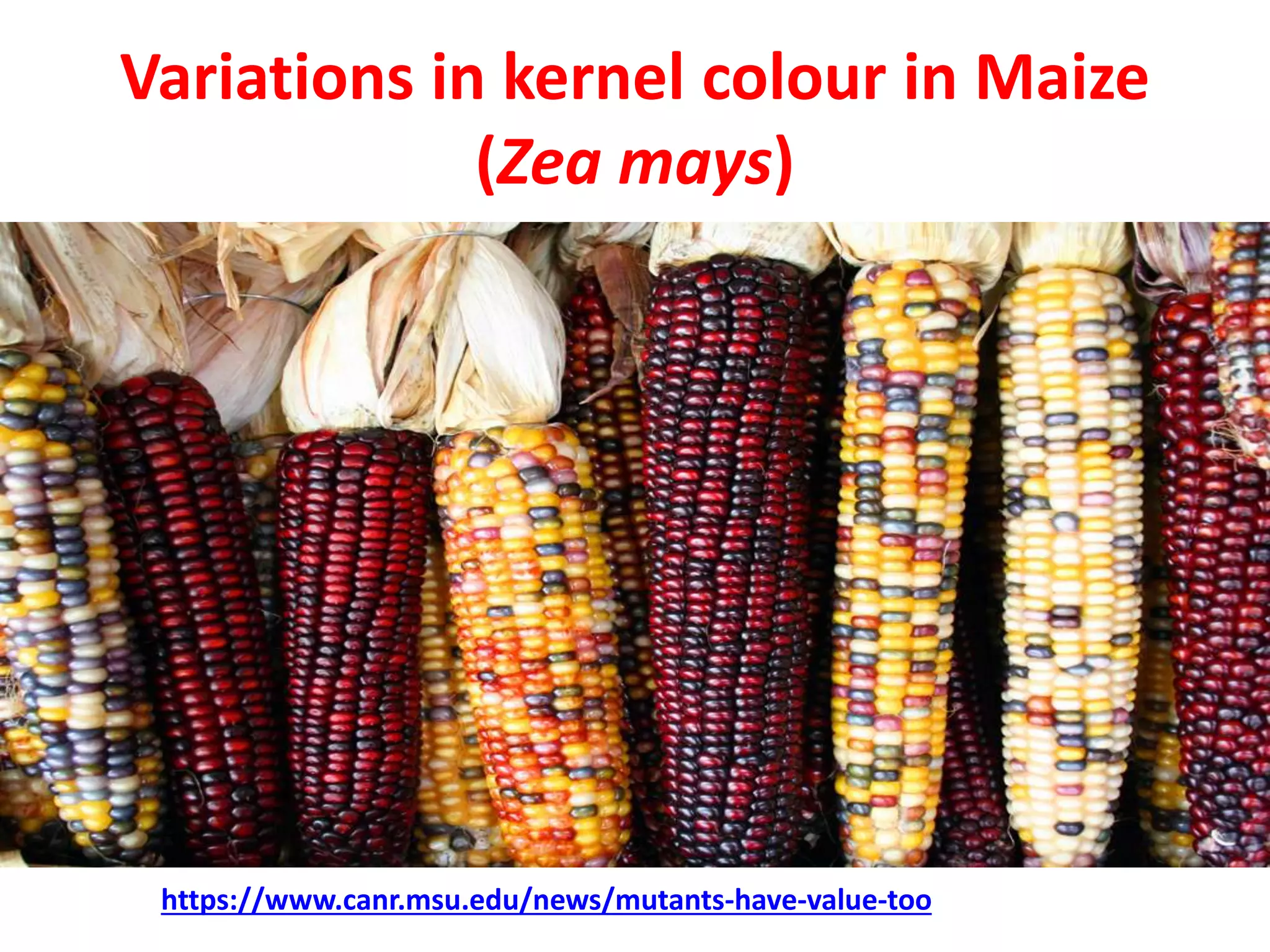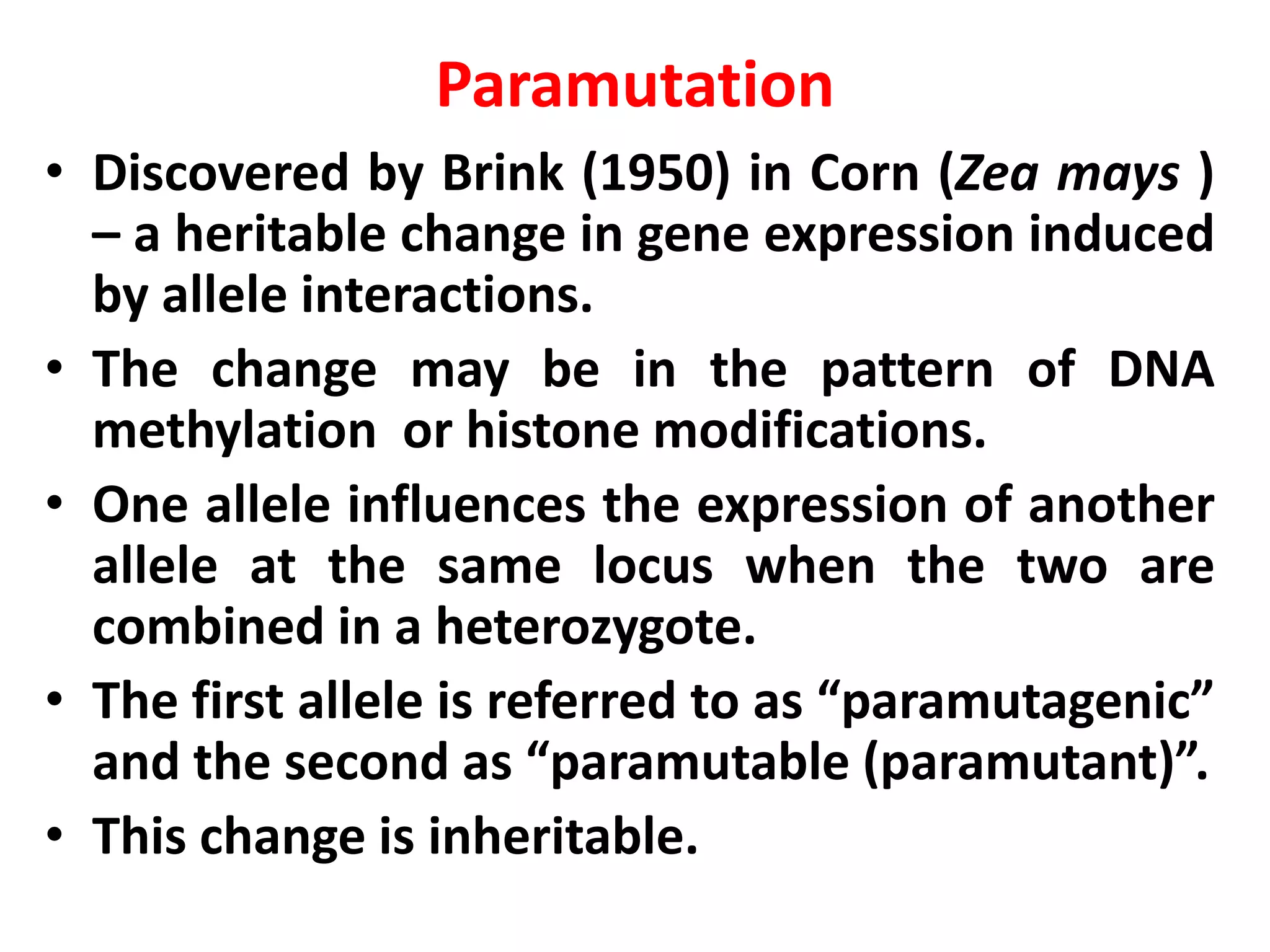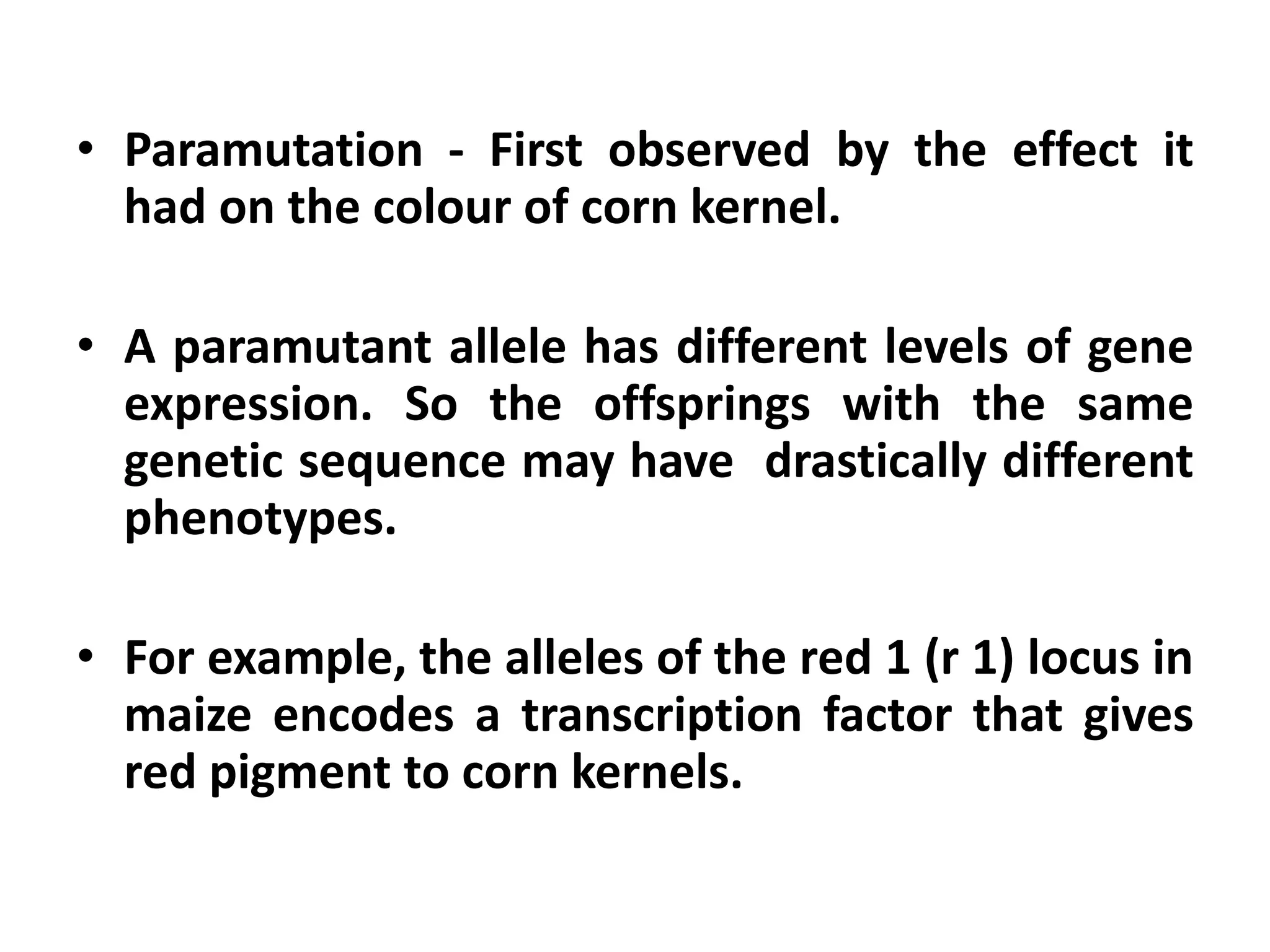The document discusses mutations, which are changes in genetic material that can lead to heritable characteristics. It categorizes mutations based on their occurrence (somatic and germinal), mode (spontaneous and induced), and nature (chromosomal and gene mutations), detailing their mechanisms and effects. Various mutagens, including physical and chemical agents, as well as specific types of mutations like silent, missense, and nonsense mutations, are described to illustrate their significance in genetic variability and the development of diseases.

![MUTATIONS
• Hugo de Vries (1901) introduced the term mutation to
describe the sudden appearance of heritable
characteristics based on his observations on the
evening primrose, Oenothera lamarckiana.
• Mutation is the change in the genetic material.
[Deoxyribonucleic acid, (DNA) - in most of the
organisms, Ribonucleic acid (RNA) in some viruses].
• The organism subjected to a mutation is called a
mutant.
• Mutations can result in a new allele.](https://image.slidesharecdn.com/mutations-200630134254/75/MUTATIONS-SMG-2-2048.jpg)
















